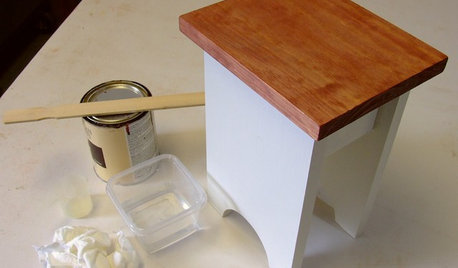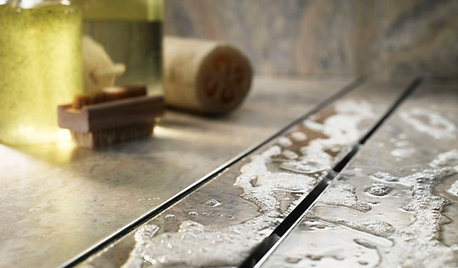Test for Gasoline in the oil
cranheim
16 years ago
Featured Answer
Sort by:Oldest
Comments (34)
canguy
16 years agomownie
16 years agoRelated Discussions
oops - gasoline in the oil compartment !?
Comments (13)You're making a lot of assumptions! The posters WIFE told him, and then he posted. She's the only one that knows for sure, how much a "small amount" is. Compared to the fuel tank capacity, it may be a "small amount"! Maybe only a pint. Who knows for sure. What if the oil level was below the add mark? We simply don't have enough information! '"Mix 32 parts gas to 1 part oil and you have a pretty good lube"' Making that statement in a thread dealing with a 4 stroke engine is very careless. The poster is wondering what to to do and you come up with a statement like that! "The thing that always gets me on this problem is how often it happens, and how people go to the extra trouble to put gas in the oil fill, apparently overlooking the small hole and oil dipstick in the process. My conclusion is that the average person is simply not qualified to operate any motorized equipment." So is that supposed to make the OP feel better because it happens a lot, or feel bad for not being "qualified"? Nice job!...See MoreGasoline on clothes?
Comments (7)My mom washed my dad's clothes (mechanic, then truck driver) all the time - though separately. I'd prewash the sleeve, then let hang dry, see if the smell comes out. Then I'd throw it in with the rest of the heavy-duty laundry (jeans). If prewashing doesn't take the smell out, wash it separately and again spin it out on heavy duty cycle (give it extra spin if necessary) then hang. I wouldn't put it in the dryer if it still smelled....See MoreTesting oil burner transformers & cad cells
Comments (7)Very Simply. I saw the repair guy test mine. OPEN up the igniter box and rotate it over so the springs are pointing up, not down touching the two rods. TURN ON the heat so the pump is running, The repair guy disconnected the wires to the pump so he could leave ot on for a few minutes. Otherwise only do the test for 30 seconds so you don't fill the chambre with oil spray. Hold a screwdriver across the two springs holding the insulated handle. Slowly pull the screwdriver away from one spring and observe how far you are able to maintain the arc. A good coil will maintain the arc way over an inch. Less than that and it is weak. Note that igniters may get temp sensitive over time. And for $35 it may be best to change it. The photo cel will turn off the system in 40 seconds if not exposed to brite flame ;ight....See MoreDenatured alcohol test - oil vs. latex
Comments (1)Denatured alcohol will remove latex and shellac based paint but will do nothing to oil based paint....See Moredeerslayer
16 years agorcmoser
16 years agorustyj14
16 years agowalt2002
16 years agocranheim
16 years agomachiem
16 years agocranheim
16 years agotom_k_de
16 years agowheely_boy
16 years agodave01
16 years agocranheim
16 years agomownie
16 years agodave01
16 years agotom_k_de
16 years agodave01
16 years agocranheim
16 years agodavidandkasie
16 years agodave01
16 years agocranheim
16 years agodeeredoctor
16 years agonjdpo
16 years agocranheim
16 years agodeeredoctor
16 years agocranheim
16 years agodeeredoctor
16 years agocranheim
16 years agodeeredoctor
16 years agocranheim
16 years agodeeredoctor
16 years agocranheim
16 years agoGlenn Goetzinger
3 years agolast modified: 3 years ago
Related Stories

KITCHEN DESIGNSweet Ideas and a Truffle Recipe from a Chocolatier's Test Kitchen
A $2,100 budget didn't mean a half-baked kitchen redo; this confectioner just rolled up her sleeves and rolled out the improvements
Full Story
ARTNew Digital Art Frame Gets Put to the Test
Our writer sets up the EO1 at home, then invites artist friends over for a look — at images of their own work. See what they have to say
Full Story
KITCHEN OF THE WEEKKitchen of the Week: Designed to Stand the Test of Time
Ageless beauty abounds in this elegant European-inspired kitchen in Minnesota
Full Story
HEALTHY HOMEGet the Lead Out: Lead Safety at Home
Keep your family safe by properly testing for and dealing with lead in old painted surfaces, water and soil
Full Story
DIY PROJECTSCool Tip: Mimic Stain With a DIY Color Wash
Get the look of an oil-based stain without all the bother, using this easy wash made with paint
Full Story
HOLIDAYSDIY: Shiny Gold Accents to Make Your Hanukkah Table Glow
Wrap glass vessels with metallic yarn and fill them with oil and wicks for a festive and bright holiday look
Full Story
HOUSEKEEPING12 Cleaning Projects That Go a Little Deeper — Naturally
Eucalyptus oil for germy door handles. Baking soda for oven grime. Here are nontoxic solutions for often-overlooked cleaning jobs
Full Story
REMODELING GUIDESClean-Burning Woodstoves Ignite a Greener Heating Trend
No need to rely on oil or gas to heat your home — new woodstove designs burn cleanly and are beautiful to boot
Full Story
ROCKY MOUNTAINS GARDENINGRocky Mountain Gardener's February Checklist
Get smart with your seeds, strike with oil to manage pests and practice proficient pruning — your trees and shrubs will thank you
Full Story0

WINTER GARDENINGPruning Secrets for Exquisite Roses
Encourage gorgeous blooms year after year with this time-tested advice on how to prune your rosebush in winter for health and shape
Full StorySponsored
More Discussions



deeredoctor